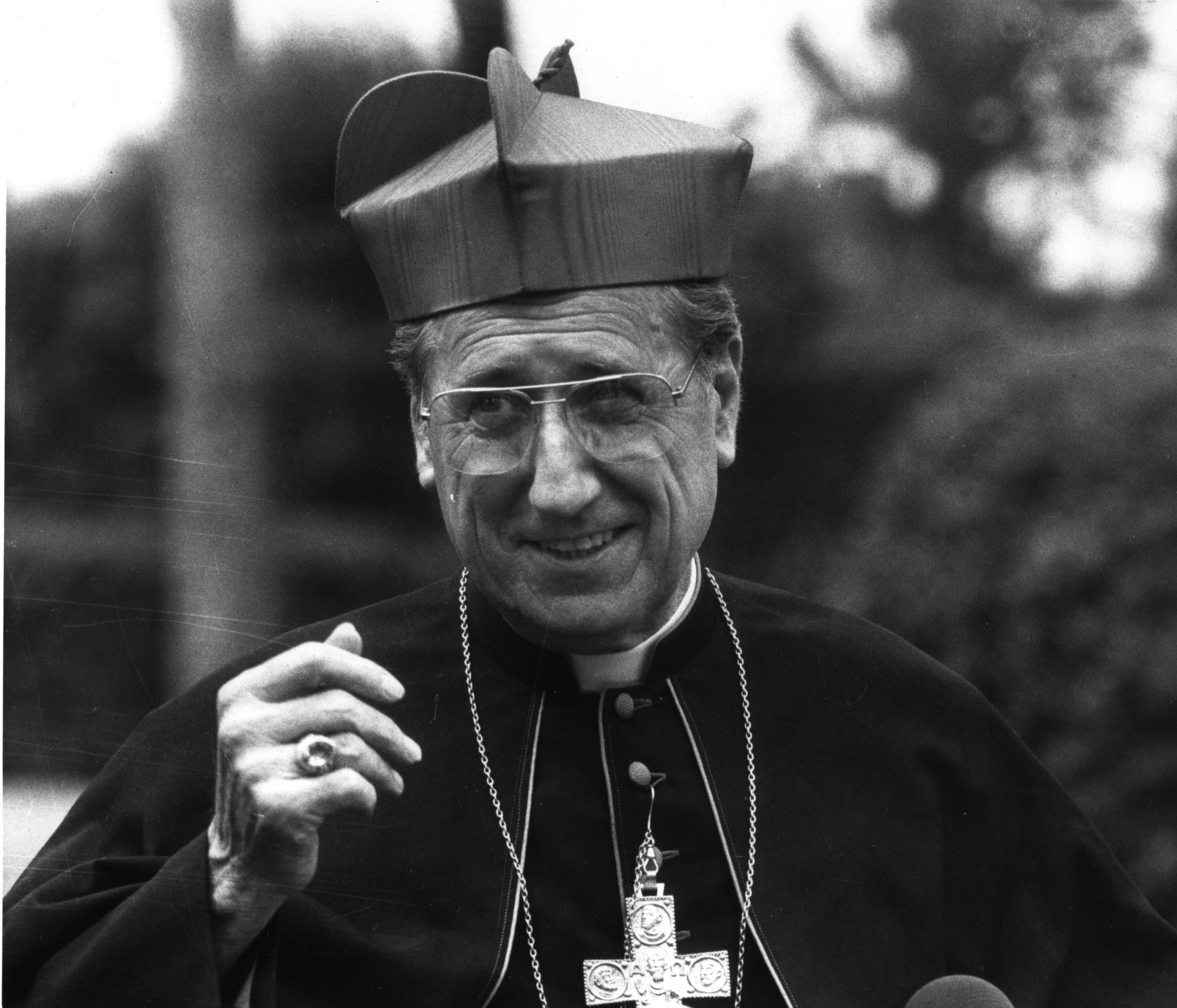About the Founder of the Sisters of Life, John Cardinal O’Connor:
Cardinal O’Connor served in the U.S. Navy for 27 years as a chaplain, retiring with the rank of Rear Admiral. In 1968, he was on a trip back to Virginia where he was stationed, travelling in a small plane that had only two seats, one for the pilot and one for him.
In Cardinal O’Connor’s words:
He was a young pilot. He was in front, and I was behind. He was of course flying the plane, but all the instruments were in my cockpit as well. We took off toward the evening with no sign of difficulty. We had only a couple of hours to fly, but we had hardly gone more than an hour when suddenly complete blackness fell. Tremendous turbulence began to shake the airplane. The rains began to beat upon us, and then a total fog enveloped us. It was an extraordinarily eerie feeling, alone in the sky unable to see anything with this fog curling right through the Plexiglas into the cockpit — only the glow of the instrument panel made anything visible at all. And then suddenly, perhaps fifty, maybe seventy-five miles from our destination, the warning light began to flash on the instrument panel that we were running low on fuel, and then shortly thereafter a second warning light flashed that we were virtually out of fuel. I called through the intercom system to the pilot. I said, “Do you see the instrument panel?” And he said, “Yes, but I think we can make it.” It came to be obvious that we couldn’t make it, so he called by radio to Washington National Airport — just a little bit closer — to ask if they could receive us, but they said no, they were completely banked in by fog. He called into Dulles Airport outside of Washington. No, nothing could land there because of fog. He called the Baltimore Airport to ask if we could land there. No we could not get in there because of fog.
I said to him, “You will have to radio the international distress signal so that some airfield will take a chance; otherwise, we can crash and not only will both of us be killed, but far worse, we don’t know what’s below us. We could kill a great number of people.” He said, “I can’t do that.” “Why can’t you do that?” “It would be a black mark on my record because I took off without enough fuel.” “Black mark on your record?” So, much senior to him, I pulled rank and said, “You will call out the international distress signal, the S.O.S., or there will be far worse than a black mark on your record.” So he did.
And this is the part I will never forget. No sooner did he call the international S.O.S. then a voice came on the radio. “SX395, I hear you.” The pilot said, “We are out of fuel, and we have no place to land.” The voice was that of a Chief Warrant Officer in the United States Navy in a place called Patuxent Naval Air Station, also close to Washington, and he simply said, “Follow my voice.” And then minute by minute, “Lower your right wing. Lower your left wing… Just follow my voice.” So calm, so steady. Then he said, “Don’t be afraid.” He knew he was dealing with a young pilot. “Just follow my voice. Just follow my voice.” Suddenly we looked down. We couldn’t have been more than a hundred feet off the ground when we saw the first lights; they were the landing lights of the field, and we glided in…to a perfect landing.
I could never forget that voice, the quality of the voice, the kindness of the voice, the calmness of the voice… “Follow my voice.” That is what the Lord says to each of us. “Follow Me. Follow My voice. Don’t worry. Don’t be afraid. I will bring you home.”
Originally printed in IMPRINT Magazine Fall 2017.

